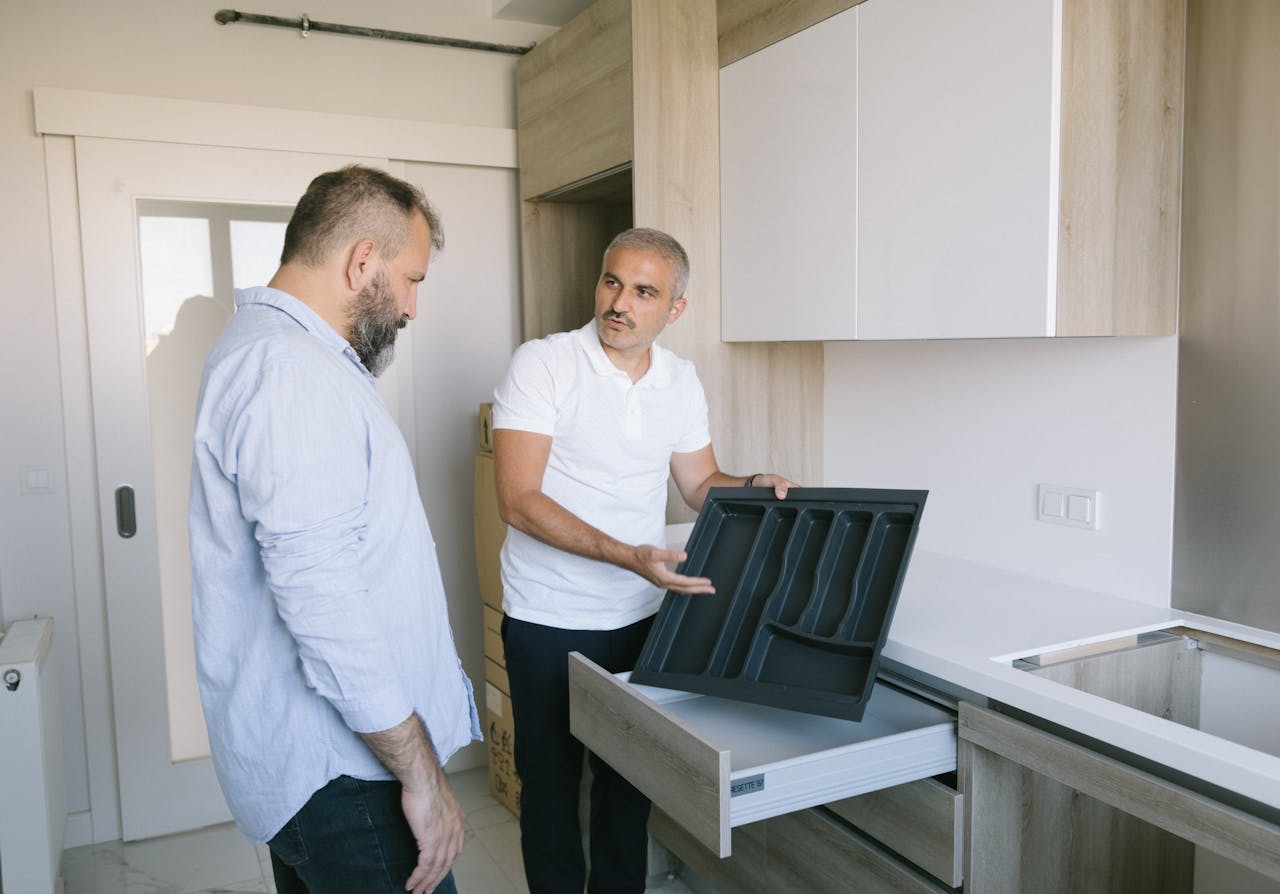There’s a quiet revolution happening behind closed doors, painted walls, and rearranged furniture — a movement that whispers authenticity through color, texture, and form. Designing a home today is no longer about aesthetics alone; it’s a declaration, a personal manifesto written in light, pattern, and belonging. To build a home that reflects your true self is to turn architecture into autobiography — each room an echo of identity, each corner an act of self-affirmation.
The Home as a Reflection of the Inner Life
A house does not just protect; it tells a story. It carries the rhythm of who we are when no one else is looking. Even the unseen parts of a home — the pipes, the wiring, the quiet flow behind walls — contribute to that story of care and function. For those seeking expert craftsmanship that ensures the home’s inner systems reflect the same pride as its design, a professional like a plumber Montreal can help transform even the practical layers of a home into expressions of reliability and artistry.
The living room becomes a stage of self, the bedroom a sanctuary into inward peace, the kitchen a beat of communal warmth. When an individual designs proudly, he or she designs unapologetically. He or she adopts boldness where once there was conformity. He or she substitutes imitation for intention.
Walls become boundaries of symbolism between what’s anticipated and what’s loved. Designing with pride is not about following the trends; it’s about building truth.
Each tile, shelf, and brushstroke is a coded message: this is who I am, and I am not afraid to occupy space.
Emotional Architecture: Feeling Your Way Through Design
Architects used to talk about geometry, but the new design language talks about feeling. Emotional architecture is about creating space from human experience — where identity defines structure, and vice versa. Pride-driven design starts within, charting emotions to materials.
Consider it this way:
- Cozy woods for safety and grounding.
- Open spaces for freedom and togetherness.
- Vibrant fabrics for joy and celebration.
- Soft light for comfort and contemplation.
It’s about bringing every piece into your emotional realm. The house comes to life — breathing, moving, vibrating with your beat.
A mirror no longer just reflects your face; it reflects your path.
The Spectrum of Identity in Space
Identity is not black-and-white. It’s a rich spectrum — bold, textured, and changing. Pride-centered design respects that richness.
A queer home, for example, could disrupt conventional distinctions — collapsing masculine and feminine lines, old and new styles, soft and industrial tensions. The dining space could also serve as a space for art. The bedroom could incorporate textures that welcome playfulness and calm in equal proportions.
This is a design that isn’t afraid to challenge the norm. It recognizes identity isn’t fixed — and therefore the space should neither be closed, fixed, nor afraid to evolve with the owner. Pride isn’t set in swatches of color; it’s living in transformation.
Functional Methods to Incorporate Identity Into Design
The process of designing proudly does not demand luxury budgets or wholesale reinvention. It demands awareness — the intentional alignment of self with space. Which colors uplift you? Which rooms feel safe? Start from your emotional map.
Celebrate Personal Symbols
Objects are powerful — a family heirloom, a handmade quilt, a framed poem. Add them on purpose. They’re anchors of identity.
Play with Contrast
Your home does not need to be harmonious in the classical sense. Allow contradiction to exist — modern alongside vintage, bold alongside neutral. Harmony is not uniformity.
Honor the Senses
Pride isn’t only visible; it’s tangible, scented, and audible. Candles that recall memories, texture that soothes, sound that fills space — sensory design creates emotional richness.
Design for Belonging
Design spaces that welcome connection — reading spots for reflective solitude, shared spaces that honor coexistence. Pride thrives where presence is embraced.
Every design decision becomes a move toward visibility — a reclaiming of self through creative expression.
Spatial Fluidity and the Ditching of Labels
Home so frequently becomes the victim of labeling — living rooms, dining rooms, studies — each assigned to a single purpose. Pride design destabilizes that formality. Why would a room ever be restricted to but one story?
Fluidity in design echoes the fluidity of self. A house that changes becomes a declaration of defiance against boxes — literal and metaphoric. A kitchen space functions as a studio, a hallway as a gallery, a bedroom can have a meditation nook. The traditional dictionary of architecture warps under the heaviness of contemporary identity, and it’s exactly where authenticity is found.
Furniture travels like punctuation in poetry — changing tone, establishing rhythm, re-writing story. The malleability of space becomes a metaphor for freedom itself.
Color Psychology and Self-Expression
Colour is one of the strongest voices of design. It speaks in ways that words cannot. To create a home that represents your authentic self, colour needs to be personal, not prescriptive. Colour psychology goes beyond aesthetics — it determines emotional connection.
- Red: Confidence, power, vitality.
- Orange: Energy, warmth, creativity.
- Yellow: Brightness, optimism, new beginnings.
- Green: Harmony, growth, restoration.
- Blue: Loyalty, truth, calm.
- Purple: Individuality, mystery, imagination.
If these colors are drawn together in honesty, a house is a rainbow of self-expression — a living painting stained with feeling instead of conformity.
The Elements of Pride-Centered Design
To create a space that genuinely embodies identity, design needs to meet emotion, intent, and liberty. Below are critical elements that turn a mere house into a statement of pride:
Authentic Art
Select art that resonates with you — be it queer artists, cultural symbols, or abstract symbolism that breaks convention.
Layered Textures
Merge the rough and smooth, metallic and organic, matte and shiny. These textures symbolize life’s contrasts and complexities.
Sustainable Choices
Reused wood, local craftsmanship, or vintage goods bring pride and planet together.
Adaptive Layouts
Rolling furniture, modular storage, moveable walls — adaptive design mimics the changing nature of identity.
Inclusive Spaces
Design for everyone — furniture for all bodies, neutral spaces for all genders, open spaces for every story.
Light and Shadow
Pride is found even in opposition. Let there be natural light wherever possible, but also find room for darkness — the silent spaces of contemplation are just as important.
These values collectively turn a house into a home story — one composed in layers, light, and honesty.
The Emotional Weight of Belonging
Pride in design goes beyond individual aesthetics. It’s about designing spaces where belonging is a reality. A home that is your true self is not just gorgeous; it’s therapeutic. It heals the cracks brought about by spaces that previously asked for silence or conformity.
When walls are authentic, they are no longer barriers — they’re extensions of self. You breathe differently within a home that welcomes you. Each chair, each shelf, each morning coffee quietness feels like validation.
Belonging is not purchased — it’s constructed, choice by choice, in authenticity.
Architecture as Advocacy
In so many respects, pride design goes beyond interiors. It becomes a practice of advocacy — a method of defying norms and celebrating visibility. Architecture has a long history of reflecting the values of society, and by creating houses that defy erasure, people contribute to reauthoring cultural narratives.
A house can be a political action — soft, but strong. The addition of queer art, the selection of sustainable materials, the visibility of nonorthodox forms — all are acts of resistance to the notion that identity must be concealed. Designing proudly means designing for freedom — individual and communal.
The Poetics of Everyday Spaces
Ultimately, pride-based design is not about excess. It’s about poetry in the mundane — how light warps on a rainbow-hued curtain, how texture moves beneath your fingertips, how room invites your entire self without reserve.
It’s about feeling woven into structures, truth sculpted into pieces of furniture, and pride quietly basking in the vertices of your existence.
A house that represents your real self doesn’t yell — it whispers softly, perpetually, like a heart that has found peace.
Conclusion: The Art of Living Authentically
Creating proudly is a brave act. It requires you to know yourself well enough to express that reality in your environment. It’s not a matter of trends, excess, or validation — it’s a matter of resonance. The walls of your house should ring back who you are when you are barest and most vulnerable.
To create a house that showcases your authentic self is to carve room for truth in a world that increasingly demands performance. It’s the art of living, not decorating — a celebration of presence, color, emotion, and unfiltered humanity.
And when it finally rises, that home, in all its singular imperfection and beauty, it is no longer mere shelter — it is a sanctuary of selfhood, built with pride, and lived with love.






